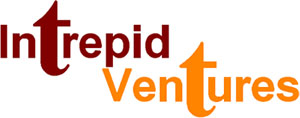Cash use by country varies enormously. While its use has been falling on both sides of the Atlantic, Europeans use considerably more cash than Americans. Higher taxes and greater tax avoidance, culture, and lower consumer incentives to use electronic payment systems, contribute.
The ECB’s “Study on the payments in the euro area 2022” reported that 59% of consumer payments in the euro-zone at the physical point of sale were made in cash. Seventeen percent of payments in the euro-zone in 2022 were online. Assuming they were largely electronic, roughly 49% of consumers’ payment transactions in the euro-zone were in cash. Across the Atlantic, the Federal Reserve’s “2024 Findings from the Diary of Consumer Payment Choice” reported that only 18% and 16% of all US consumer payments in 2022 and 2023, respectively, were made in cash.
People do more of what they’re rewarded for and less of what they’re penalized for. Incentives in the EU and the U.S. differ.
The Tax Foundation’s Center for Global Tax Policy’s “International Tax Competitiveness Index 2023” scores U.S. consumption taxes as lower than every EU country in the Organization for Economic Cooperation and Development. And, the U.S. has lower individual income taxes than most major EU countries. One of the reasons more Europeans than Americans pay in cash is to avoid higher taxes.
Every country has an informal economy of activities hidden from government to avoid taxes and regulation, or for institutional reasons. If people want to avoid paying sales, value-added, and income taxes, they don’t pay with or accept credit and debit cards. They pay in cash.
With the exception of Switzerland, Europe’s shadow economies are larger than America’s, most far larger.
Economists Leandro Medina and Friedrich Schneider’s fascinating research “Shedding Light on the Shadow Economy” estimated the size of informal economies in countries worldwide. There’s enormous variation. They estimated that at the extremes, Switzerland’s and Bolivia’s shadow economies in 2017, were 5.4% and 55.8%, respectively, of the total.
Medina and Schneider estimated that in 2017 America’s shadow economy was 5.7% and, in the euro-zone, Belgium’s, Greece’s, Italy’s, Portugal’s, and Spain’s shadow economies were 16.5%, 24.8%, 19.8%, 16.1%, and 20.3%, respectively, of the total. Northern European countries’ grey economies while larger than America’s, aren’t as much larger.
Cultural attitudes matter. Francis Fukuyama in Trust: The Social Virtues and The Creation of Prosperity observed most countries are “low-trust,” meaning that people don’t trust those outside their families or inner circles. Cheating on taxes is more culturally acceptable in low-trust societies. America is a high-trust society. Much of southern and eastern Europe is low-trust.
When tax avoidance is widespread, law-abiding taxpayers have to pay more. Making the use of electronic payment systems more attractive, would make it more difficult for individuals and firms to operate in the shadow economy, and, thereby, potentially, enable law-makers to reduce tax rates.
Irrespective of the relative tax burdens, incentives to use electronic payment systems are greater in the U.S. than in Europe. American cardholders are richly rewarded for paying with credit cards. A more robust revolving-credit market and market interchange fees funding a buffet of benefits and rewards make credit cards a more compelling consumer proposition in the U.S. Consumers pay with cards for convenience, record-keeping, and because often they’re rewarded handsomely for doing so. In 2023, 57.3% of US general-purpose card payments value and 40.3% of transactions were credit. Whereas in the first half of 2023, only 8.8% of EU general-purpose card payments value and 8.1% of transactions were credit.
The EU has reduced people’s incentives to pay electronically. Interchange fees paid by merchants fund cardholder rewards and benefits, and fee-free accounts. Brussels imposed punitive price caps on credit and debit interchange fees of 30 and 20 basis points, respectively. In 2022, the average US market debit-interchange fees for politically sympathetic bank issuers with under $10 billion in assets of Discover, Mastercard, and Visa debit cards were 141, 137, and 143 basis points, respectively – roughly 600% higher than the EU’s di minimis price control. Some U.S. premium-credit interchange rates are 800% higher.
Because of interchange price controls, European programs rewarding card use, to the extent they exist at all, are stingy. That accounts, at least in part, for why credit-card use is much less prevalent and cash use is higher in the EU.
Enabling the payments industry to more richly incentivize Europeans to make card payments won’t eliminate cash or the grey economy, but it would reduce both.

